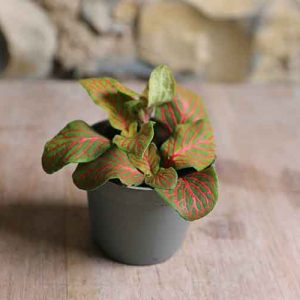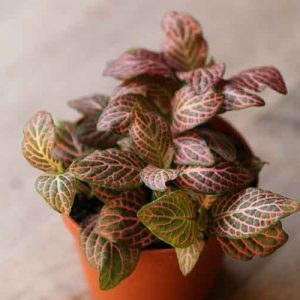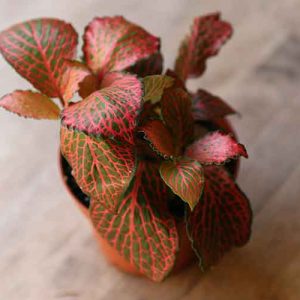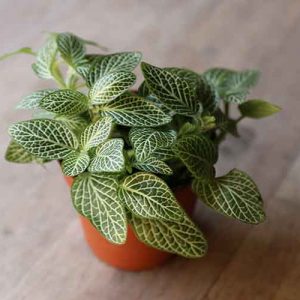HOW TO CARE FOR YOUR FITTONIA (NERVE PLANT)
THE NERVE PLANT
Fittonia Albivenis AKA. Nerve Plant / Silver Net Plant / Mosaic Plant
This herbaceous little number from the forests of South America has become a houseplant rockstar. A regular fixture in garden centres, cafés and conservatories all over the UK, the Fittonia is a species of evergreen plant in the Acanthaceae family. Known for its rich dark-green foliage threaded with contrasting white or red veins, or ‘nerves’ if you will, these plants are perfect for bringing a little of the great outdoors, inside.

Where Does It Come From?
A far-cry from living room shelves in Blighty, the Fittonia is native to the sultry jungles of South America and can be found in the tropical lowlands of Peru, Bolivia, Ecuador, Colombia and northern Brazil. In the Amazonian regions of these countries, many indigenous communities use the leaves of various Fittonia subspecies in local medicine for the treatment of headaches, toothaches and to inspire religious visions. OBVIOUSLY don’t try this at home – indigenous people know what they’re doing. It is due to the Fittonia’s exotic homelands that it struggles to survive outdoors in the UK. Overall, in regions where the temperatures regularly dip below 10°C, the Fittonia has to be kept nice and cosy indoors.
Why Should I Get One?
- Easy to care for
- Beautiful bright colours which remain even when the plant gets larger
- Non-toxic to cats and dogs
How Big Can It Grow?
Kept indoors in ideal conditions, these plants will grow to around 15 centimetres tall with lush green leaves than usually end up between 7-10 centimetres long apiece. Flowers rarely form on Fittonia plants raised in the UK, but if you get lucky, the tiny blooms are a delicate off-white colour and grow close to the fuzzy stems.
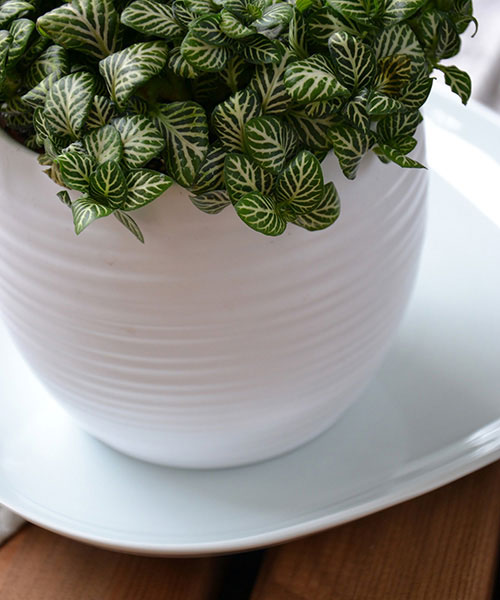
Where Should I Keep It?
A veritable sun-worshipper, the Fittonia is native to the balmy lowlands of South America, and thus needs all the sunshine is can get here in the UK! Fittonia plants can also survive in the partial shade and tend to grow well whether exposed or sheltered. Place in a south- or east-facing position to allow this exotic little guy to make the most of any good weather and soak up those all-important rays. Soil-wise the plant is fairly adaptable and will thrive in sand-, clay-, chalk- and loam-based earth as long as there is adequate drainage. Preferring a humidity that mimics the sticky heat of the Amazon, these plants thrive kept under glass in a terrarium, and ideally you should be aiming for an ambient temperature of around 13-15°C for them.
How Often Should I Water It?
Think of your Fittonia like a poolside sunbather in a hotel in southern Spain. They love the heat, but leave them out there too long without adequate hydration and they’ll frazzle up pretty quick. These thirsty shrubs must be watered regularly and the addition of a monthly dose of a liquid fertiliser would be the cherry on top of the plant-care cake. Without a good watering every couple of days, these plants are known to ‘faint’, though can often be miraculously revived with a little concentrated TLC. In winter, aim to water little and often to keep the soil barely moist and to avoid drowning the plant.
Bringing a little of Latin America’s verdant jungles to your home, the Fittonia is a lovely addition to any houseplant collection and terrarium setup. With the right love and care, most last between two and five years and are a great way to brighten up your indoor spaces.

